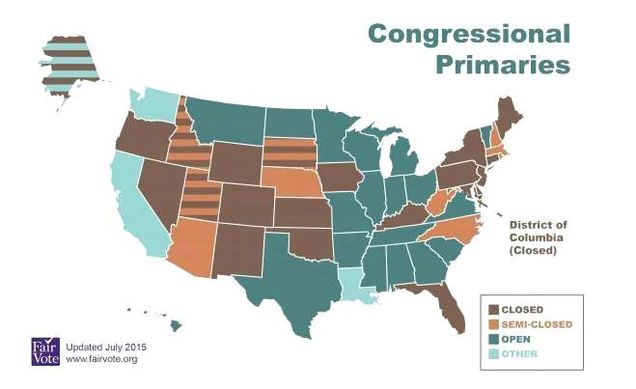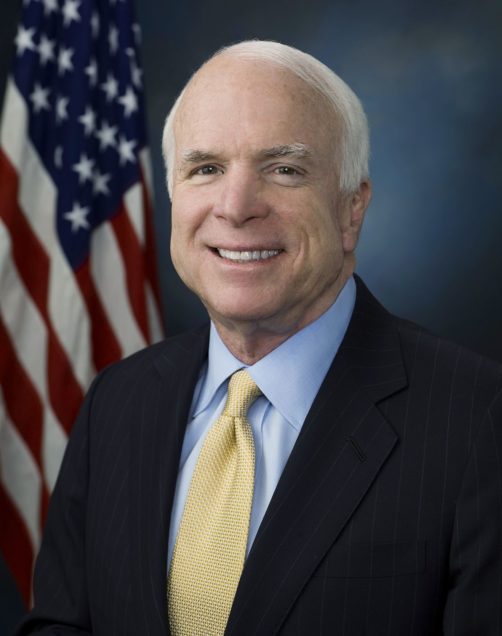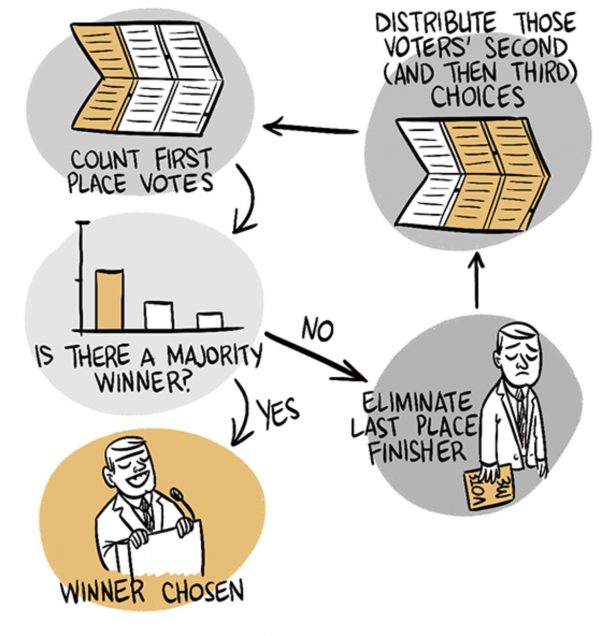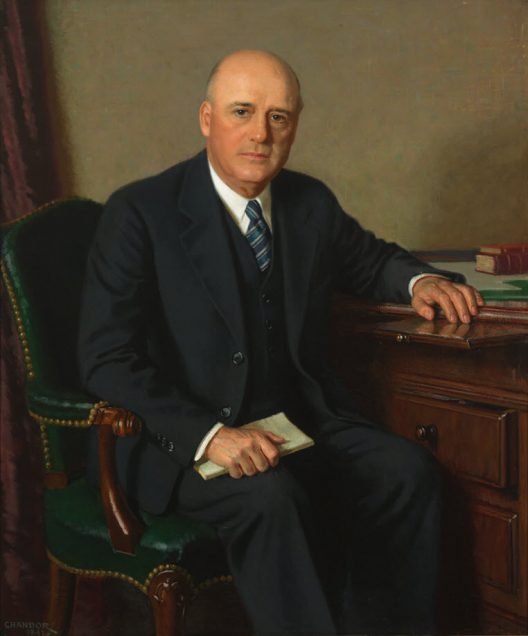Category: Opinion
Chaos
I bought a painting!
I am not a major collector by any means, but I could not pass this one up:
The painting, entitled “Chaos,” is by Austin Texas based artist Laura Atlas Kravitz from Lollies Follies Studio. A lawyer, Laura works in government relations for an education organization. She started painting as a stress relief and a way to bring the community together. One of Laura’s ongoing themes is the Texas State Capitol and how she sees it depending on the day, time of year, and perhaps most importantly, what is going on at the time.
The Texas State Capitol was constructed between 1882 and 1888 and has been a National Historic Landmark in 1986. The Capitol is located on a hilltop overlooking downtown Austin and is an example of Italian Renaissance Revival style. Although it is taller  than the US Capitol, it is only the sixth tallest state capitol, so there is at least one thing that isn’t bigger in Texas! Then again, the Capitol has almost 400 rooms and at 360,000 square feet of floor space, it is the largest state capitol in the United States.
than the US Capitol, it is only the sixth tallest state capitol, so there is at least one thing that isn’t bigger in Texas! Then again, the Capitol has almost 400 rooms and at 360,000 square feet of floor space, it is the largest state capitol in the United States.
The building has a pink hue because it is constructed of local sunset red granite. When the building was dedicated there was a weeklong celebration that included cattle roping, baseball games, singing groups, and fireworks. Some attendees purchased pieces of red granite as souvenirs.
The Capitol is topped with the statue Goddess of Liberty, a sculpture by Elijah E. Myers. In 1986, the original sculpture was replaced by a replica and the restored original is now in the The Bullock Texas State History Museum.
So why did I like this painting so much?
Anyone who has worked in Congress or a legislature knows the emotion that this painting evokes. Most of Laura’s other paintings of the Capitol (available on Etsy) are light, some with many colors. Here the Capitol is surrounded by darkness. This, however, is not the darkness of a clear Texas night where the Goddess of Liberty generously adds a star to the firmament. This is a gloomy, yet swirling, darkness that at once uproots the Capitol from its Austin hilltop but also weighs the Capitol down. The darkness churns, not from winds or storm, but from uncertainty.
Laura tells me she painted “Chaos” a few days into the Legislature’s Second Special Session –a very chaotic time. A group of House Democrats had decamped to Washington DC in an attempt to stop what they saw as an odious bill that would have restricted voting rights. In return, Governor Greg Abbot, in a cruel-yet predictable-move, vetoed funding for the legislature and its 2,100 employees. That is fine for the legislators themselves, who are paid very little for their service and stand for election for reasons other than financial gain. It was obnoxious, however, to threaten the legislative staff—the people who keep the Capitol clean, the ones who answer telephone calls from constituents, the legal and policy staff who draft and redraft the bills to be debated. This year, they were working special session after special session. Staff work long unpredictable hours with tremendous stress. Further, legislative staff, especially lawyers, are typically paid far less than what they could make in other jobs. In large part, they do their job out of a sense of public service. To threaten the staff and their families with no pay was unconscionable.
Some will blame the missing Democrats for the chaos. I generally believe that when someone is honored by their constituents to represent their community they have an obligation to be there. If you are going to break quorum, however, it should be over something vitally important—like protecting the voting rights of the powerless and underrepresented. The Republicans pushing these voting rules might point out that they control the Legislature and under our system the majority rules. True. Still, in a Constitutional system, the will of the majority is tempered–and sometimes thwarted–by the God-given rights of the minority. Efforts to protect someone’s ability to vote, which is referred to as a right in the US Constitution no less than five times, is–or should be–an example of when extraordinary measures are required.
I really like that Laura used gold to define the Capitol rather than another color—especially the pink of the actual granite. Gold is not just valuable, but precious. Legislatures, both as an institution and as a concept, are precious as well–even in difficult, chaotic times. People peacefully debating to work out their differences and create policy for the greater good may be the most valuable thing ever devised by society. In this painting the gold is swirling off the building and into the gloom. Unlike red granite, gold is malleable and soft. It is easily molded into something beautiful; but items made of gold can just as easily be scratched, chipped away, or destroyed.
In times of chaos, the legislature can suffer—both in its reputation held by the people outside the building and in the faith and enthusiasm of the people within. Luckily, when the legislative body returns to normal and functions as it should, the precious gold luster can be both restored and augmented—in preparation for the next storm of chaos.
I will end my amateur art analysis by noting that the gloom in Laura’s painting is not total–there are spots of light in the dark. Looking at the painting the light spots are amidst splotches that could have been caused by drops of sweat–or tears. Still, hope hides just beyond the chaos. The British poet Alfred Noyes wrote The Road Through Chaos, which begins:
There is one road, one only, to the Light:
A narrow way, but Freedom walks therein;
A straight, firm road through Chaos and old Night,
And all these wandering Jack-o-Lents of Sin.
It is the road of Law, where Pilate stays
To hear, at last, the answer to his cry;
And mighty sages, groping through their maze
Of eager questions, hear a child reply.
I have commissioned Laura for another painting of the Capitol on the theme of “Sine Die” when the session finally, mercifully comes to an end and the legislative business, for better or worse, concludes.
I can’t wait to see what she comes up with.
n.b. All opinions in this article are mine alone and do not reflect those of the artist.
Checks & Balances in a Pandemic
Recently, Shelley Luther, a Dallas based hair salon owner was jailed for refusing to close down her salon. The owner of Salon à la Mode continued operating her business despite a temporary restraining order last week from Dallas County State District Judge Eric Moyé. She continued operating despite a county official’s cease-and-desist letter ordering her to close.
As Luther faced criminal and civil contempt-of-court charges, Judge Moyé told Luther to admit her actions were selfish and wrong and promise that she would follow the law. CBS DFW reported that Luther refused responding,
“I have to disagree with you, sir, when you say that I’m selfish, because feeding my kids is not selfish. I have hair stylists that are going hungry because they’d rather feed their kids. So, sir, if you think the law is more important than kids getting fed, then please go ahead with your decision, but I am not going to shut down the salon.”
This answer did not please Judge Moyé, who immediately sentenced Luther to seven days in jail. Luther was not given an opportunity to go home or even have a phone call, if it hadn’t had been for her boyfriend her adolescent daughter would not have understood why her mother didn’t come home that night.
During the COVID-19 Coronavirus Pandemic, officials have agreed that jail is a breeding ground for the virus. In order to best protect the people, officials have quickly worked to release many non-violent prisoners for the sake of their health. Dallas county specifically released 1,000 inmates to ease crowding in the hopes to slow the spread of COVID-19 at the Dallas County jail. At a time where officials are releasing prisoners, I find it inappropriate to make an example of Luther by throwing her in jail. Not only was this action a risk to her health, but a risk to her family and those exposed to her when she would be released a week later. Additionally, if Luther had been asymptomatic there was a risk that she herself could have brought the virus into the prison.
Furthermore, Dallas County District Attorney John Creuzot announced policy reforms plans to end mass incarceration in Dallas by decreasing the use of excessively high bail amounts, no longer prosecuting most first-time marijuana offenses and not prosecuting thefts of personal items under $750 that are stolen out of necessity. These policy reforms were established to decrease the number of incoming prisoners. Again, at a time where officials are fighting to decrease prison populations, Moyé’s actions neglected to consider the bigger picture. A better alternative would have been a fine for each day she was in operation, with the money allocated to benefiting the community.
Due to public outcry, Gov. Greg Abbott modified his executive orders to remove confinement as a consequence for violating them. He stated:
“Throwing Texans in jail who have had their businesses shut down through no fault of their own is nonsensical, and I will not allow it to happen,” Abbott said in a statement Thursday. “That is why I am modifying my executive orders to ensure confinement is not a punishment for violating an order.”
His change supersedes local orders and Luther was subsequently released. Luther was fined $7,000 for violating a temporary restraining order against reopening her business. However, Lt. Gov. Dan Patrick pledged to step up and pay the fine on her behalf.
The COVID-19 Coronavirus is an unprecedented time in our nation’s history, with legislators unsure how to best regulate protective measures. State legislators have gained an enormous power with COVID-19 Coronavirus. Without a doubt aggressive government intervention has occurred during this health crisis. Historically, pandemics have led to an expansion of the power of the state. Looking towards the future, legislators will have to work to strike a balance between protective regulations and domineering policies.
 Diana Alexandra Martinez anticipates graduating from Boston University School of Law in May 2021.
Diana Alexandra Martinez anticipates graduating from Boston University School of Law in May 2021.
Blanket Primaries or Ranked-Choice? Why Not Both?
A substantial number of Americans continue to voice dissatisfaction with current American electoral practices. This has put Justice Brandeis’s laboratories of democracy to work by prompting some states to exercise their powers to design election systems to experiment with various electoral reforms. Those powers derive from the state constitutions for elections of state officers; Article I, Section 4 of the U.S. Constitution to “[prescribe] the Manner of holding Elections for Senators and Representatives”, and the U.S. Constitution Article II, Section 1 to determine how electors for President may be chosen.
Many states have allowed their municipalities to experiment, with a few states adopting reforms on a state-wide level. In the latter category, some states, like California and Washington, have adopted what is sometimes described as the top-two, blanket, or Louisiana primary, while Maine has implemented ranked-choice voting. While these reforms have been innovative, study of their effects reveals limited success in achieving advocates’ promises. This post concludes that by combining both reforms, states will be better positioned to access the positive outcomes hoped for.
Blanket Primaries
Former Republican congressman from Oklahoma, Mickey Edwards, has argued that the problem with American politics is our  broken election system that rewards partisanship at the expense of good policy. Edwards argues that the culprit is the primary. Primary election turnout is notoriously low, with a recent Pew Research Center study celebrating a surge in participation in the 2018 House primary elections of 56% - a surge that still left turnout in that primary under 20%. The belief is that since political participation in primaries is so low, they are dominated by the most active, and most partisan, members of the parties, limiting the success of more centrist candidates, who are presumably more representative of their districts. In particularly politically active years, incumbents are at risk of being “primaried” by extremists in their party. Thus, the candidates in the general election tend to be more extreme, on both ends, than the district, and the eventual winner is then likely to represent only one extreme, rather than the district as a whole.
broken election system that rewards partisanship at the expense of good policy. Edwards argues that the culprit is the primary. Primary election turnout is notoriously low, with a recent Pew Research Center study celebrating a surge in participation in the 2018 House primary elections of 56% - a surge that still left turnout in that primary under 20%. The belief is that since political participation in primaries is so low, they are dominated by the most active, and most partisan, members of the parties, limiting the success of more centrist candidates, who are presumably more representative of their districts. In particularly politically active years, incumbents are at risk of being “primaried” by extremists in their party. Thus, the candidates in the general election tend to be more extreme, on both ends, than the district, and the eventual winner is then likely to represent only one extreme, rather than the district as a whole.
To address this concern, Edwards advocates for a reform known as “blanket” primaries, sometimes referred to as “Louisiana,” “jungle,” or, most accurately, “top two” primaries. This reform provides that in the primary election, there is a single ballot, with all candidates on the ballot regardless of party. The top-two candidates who receive the most votes then move on to the general election. This means that the candidates in the general election may both be from the same party, particularly in districts whose residents heavily identify with one party over the other. This may make for more competitive general elections, in that a candidate who is almost certain not to win isn’t on the ballot, in favor of a candidate who actually has a chance of convincing voters to vote for them. Also, along with Edwards’s hope that this will reduce partisanship by ensuring the candidates in the general election better represent the center of the district, advocates have also claimed that it will increase turnout.
Unfortunately, the data provides only marginal support for the proposition that blanket primaries reduce partisanship and increase turnout. An added challenge to blanket primaries is that because only the top-two move on, it is subject to vote splitting – if too many candidates from a party enter the race, they may end up without any candidates in the general simply by virtue of the number of candidates in the race, rather than voter preferences. Thus, blanket primaries are not a panacea, at least on their own, for electing more representative representatives.
Ranked-Choice Voting
Maine has moved in a different direction, adopting ranked-choice voting (“RCV”), a darling of electoral reform advocates for decades. RCV has a long pedigree, first having been promoted publicly in the United States by William Robert Ware in the 1870s. Some states and municipalities flirted with a version of RCV, known as single transferable vote, in the last great shift in party power during the early- to mid-twentieth century. RCV and similar systems have also been successfully used internationally – including in Australia, and Ireland.
While there are many different iterations of ranked-choice voting, Maine has adopted the most typical approach. There, voters may rank candidates first, second, third, and so on. If a candidate gets a majority of first-rank votes, they are declared the winner. However, if no candidate receives a majority of votes, then the candidate with the least number of votes is eliminated, and the voters who ranked that candidate first have their votes redistributed to their second-rank candidates. If no candidate has a majority, the new candidate with the lowest number of votes is eliminated, and their voters’ ballots are also redistributed. The system continues until a candidate has secured a majority of preferences.
Advocates of ranked-choice have also claimed that the system reduces partisanship, since candidates are encouraged to appeal to voters to rank them second, even if they can’t secure their first preference. Advocates also argue that it increases turnout by
making the ballot more reflective of voters’ wishes. As with blanket primaries, however, there is only modest statistical data showing that the turnout hopes are borne out.
A Proposal
States should consider merging the two systems, blanket primaries and RCV, in order to best access the benefits of each. The real problem that neither system effectively can address is the issue of turnout. Primary elections typically draw the most politically aware sector of the electorate that is most invested in who the candidates in the general election are, but turnout remains exceedingly low regardless of the system. Blanket primaries attempt to appeal to an electorate disenchanted by the current partisan model and looking to elect “the best candidate,” but since they continue to rely on a two-stage electoral model, they don’t resolve the fundamental problem. The most partisan members of the electorate participate in the blanket primary, and turnout surges, as it always does, in the general, after the partisans have already selected who will be on the ticket. Combining ranked-choice with the blanket primary would allow there to be a single election, ensuring the highest number of voters considering all the available candidates, not just those the partisans have already selected. Moving to a single election, with candidates on a single ballot regardless of party, and using RCV would ensure that the larger electorate would be able to weigh-in, allow them to rank their preferences, and ensure that the candidate who emerged was the preferred candidate of a majority of voters. This will increase elected officials’ mandate, and provide more information about what direction the district would like to go in.
Some Unsolicited Advice To Nancy Pelosi (and Those Who Would Replace Her)
If the “Blue Wave” materializes next week, as so many predict, you Madame Leader, will become Speaker of the House once again. Time marches on, and as many have already pointed out, you and the rest of the top Democratic House leaders are all closing in on 80 years old. This situation was made even worse by the loss of Democratic Caucus Chair Rep. Joseph Crowley (D-NY); a relatively young 55 years old, to a primary challenge. There is already a movement by younger members of the Democratic Caucus for a change in leadership, but you and the other leaders do not seem to be going anywhere. It is time, however, for you—and the rest of Congress— to take a hard look at how the House is run. I would argue that when Congress worked—during the second half of the 20th Century— younger potential leaders were groomed for the difficult office of Speaker. It is time to return to that practice.
The House of Representatives was most effective during the so-called “Austin-Boston Connection” that dominated the House for 55 years; from 1940 until 1995. During nearly all of this time—from the Depression until Bill Clinton’s “bridge to the 21st Century,” the Democrats held a majority in the House. The House consistently passed needed legislation, effectively used its oversight powers and worked with presidents of both parties; not because of sheer numbers or ideological purity—far from it. Rather, the House worked, in large part, because leadership routinely identified and trained future majority leaders and speakers. After years of apprenticeship, new speakers understood both how to use the levers of power and how to deal with the opposing party.
When the great Sam Rayburn first became speaker in 1940, he had not only been the majority leader for nearly four years, he had been the speaker of the Texas House for two years—starting at the age of 29. When he re-took the speakership for the last time in 1955, he had over 10 years previous experience as speaker and 4 more years as minority leader. When John McCormack became speaker (1962-1971), he had been the Majority Leader for 18 years.
Carl Albert (1971-1977) was majority whip for seven years and majority leader for nine years before taking the gavel. Tip O’Neill came to Congress after serving four years as the Massachusetts House Speaker, then served two years as majority whip and four more years as majority leader. O’Neill’s 10 year speakership (1977-1987) became the example for a House that ideologically opposed— but worked with—a president of the same, and then another, party. Jim Wright was majority leader for 10 years before his two year speakership (1987-1989) When Tom Foley (1989-1995) became speaker, he had been majority whip for six years and majority leader for two and a half years. Every one of these speakers came to office trained not just how to lead their own caucus, but how to reach across the aisle and create the majorities needed to pass complicated and controversial legislation.
Compare that to the level of preparation for leadership since then. Newt Gingrich (1995-1999) had only five years of experience as minority whip. Dennis Hastert (1999-2007) was relatively well-trained with four years as majority whip. You, Madame Leader, (2007-2011) were minority whip for only one year. John Boehner (2011-2015) was majority leader for one year, minority leader for four years and a committee chairman for five years. Paul Ryan (2015-2019) was just a committee chairman for five years before being drafted to be speaker.
From 1995 until now—half of the time the Austin-Boston era, we have had five speakers who had a combined five years of prior experience running the House as either the majority whip or leader. How did we get here? Frankly, the Democratic leadership has stagnated and grown old. The Republicans seem to prefer whoever will apply the Hastert Rule, to the exclusion of working with Democrats, giving outsized influence to a fringe caucus.
And what have we had since 1995? Gridlock, government shutdowns, speakers held hostage by small minorities within their own caucus. The difference in productivity is stunning. From 1973-2015, nine of the ten most productive Congresses were led by Albert, O’Neill, Wright, and Foley. The lone post Austin-Boston speaker is Hastert at #10 from 1999-2001. The least productive Congresses during that time were the two led by Boehner—2011-2015.
Some would blame this dysfunction on the rise of the Tea Party and the Freedom Caucus. Still, talented speakers have overcome even greater challenges: Speaker McCormack passed maybe the most significant law of the 20th Century, the Civil Rights Act of 1964 with 91 members of his caucus dead set against the bill. Now, when a few dozen members of the Freedom Caucus opposes a bill, it becomes impossible to pass. Others may say the problem is gerrymandering—but that has been a problem since the founding generation; and since the Supreme Court keeps avoiding the issue, it is not going away soon.
What does this history lesson have to say about the next Congress? This year it has become fashionable to run for Congress as a Democrat while running against you Rep. Pelosi by name. Gil Cisneros, who has received $2 million from the Democratic Party to run for the House, said he won’t be voting for you because, “new leadership is needed.” Tim Ryan (D-OH) got 63 votes in the last leadership vote and Rep. Seth Moulton (D-MA) has been openly critical of the current leadership. Rep. Linda Sanchez (D-CA) has also announced her candidacy for leadership. Perhaps this is good politics, but a new set of leaders with no experience is not in the best interest of either the Democratic Party or the House as an institution. None of these insurgents know what they are in for. If the House is to work—especially while dealing with the mess that is the Trump Administration— it needs a steady and experienced leader in charge.
To your credit, you have remained supportive of breakaway Democrats, “I’m OK. Just win baby. I think many of them are saying we need…new leadership, yeah I don’t take offense at that.” That is the right point of view for a House leader— and the Democrats are lucky to have a leader with four years of experience as speaker.
Still, you must look to the future now. Who will lead the House Democrats next? Are you training the next generation of leaders? Will they be practical, unifying politicians in the mold of the Austin-Boston era? I hear you plan to put a younger member in charge of the Caucus--and that is not enough. In the next session, you must entrust a new generation with the majority leader and whip positions and there are some terrific options:
Rep. Jim McGovern (D-MA) has mastered one of the most important levers of House power as ranking member of the Rules Committee. Rep. Diana DeGette (D-CO) immerses herself in complicated issues like stem cell research and gun control, and is already a deputy whip. Rep. Terri Sewell (D-AL) is another deputy whip with experience on the Intelligence Committee. Rep. Jim Himes (D-CT) is chair of the moderate New Democrats Coalition, a position Joe Crowley held before joining leadership. Any two of the four would bring new blood to leadership and be a bridge to the younger members.
If the House is to work again, we need you to train a new generation of leaders. It is time to bring back the leadership apprenticeships that worked so well during the productive Austin-Boston Connection.
 Sean J. Kealy is a Clinical Associate Professor of Law and the Director of Legislative Clinical Programs at Boston University School of Law.
Sean J. Kealy is a Clinical Associate Professor of Law and the Director of Legislative Clinical Programs at Boston University School of Law.
The Problem-Solving Legislature
Someone once told me that the large windows of the Massachusetts State House symbolize openness. They allow the public to see what their legislators are doing inside. The law-making that happens within is complex, as seen here, or here. In this post, I propose that legislatures should approach the complex law-making process as a problem-solving enterprise. Rather than simply trying to label the legislative process, I suggest that a problem-solving mindset—employing problem-solving tools and methodologies—applied to the development of every bill would result in better legislation.
Former Boston University Law Professors Ann and Robert Seidman, also conceived of law making in problem-solving terms. See, e.g., Ann Seidman & Robert B. Seidman, Instrumentalism 2.0: Legislative Drafting for Democratic Social Change, 5 Legisprudence 95 (2011). The Seidmans developed a “four-step, problem-solving methodology . . . [for] designing legislation aimed at ameliorating perceived social problems” Id. at 100. The eight-step methodology that I propose below bears some similarities and some differences to that of the Seidmans. The most significant difference between the two theories is focus. The Seidmans’ methodology is focused on how a drafter can craft a piece of legislation oriented around the behaviors of relevant actors, thereby achieving desired social change. See id. at 133-140. My methodology is focusesd more on the substantive solution a legislature decides to implement, and less on the drafting of that solution into a bill. They focus on the legislative drafter. I focus on the legislative process.
To this end, I have formulated the following outline of an effective problem-solving process. These steps were inspired, in part, by the scientific method, and the Eight Discipline Problem Solving process developed by the Ford Motor Company to resolve problems in a manufacturing environment. My eight steps are:
- State the problem or goal.
- Understand the problem (gather and analyze relevant data).
- Propose, discuss, and refine prospective solutions.
- Critically assess those solutions (Considering things such as costs, value, risks, and likelihood of success).
- Select and implement the most advantageous solution.
- Measure the results of the implemented solution.
- Communicate success.
- Identify the next problem or goal to address.
These steps could be used to develop a legislative solution in the following manner:
- State the problem or goal.
Problem statements in the early stages may be broad, and refined, as the process proceeds, into a more specific goal.
- Understand the problem (gather and analyze relevant data).
This step would likely be completed by a legislative committee. It is important for the committee to do more than reach out to experts, interest groups, and lobbyists for opinions and selective data. The committee must identify the relevant data that it needs to understand the problem, gather that data, and critically analyze it—which may require consulting experts in statistical analysis.
- Propose, discuss, and refine prospective solutions.
With a deep understanding of the problem, the committee should generate a wide range of solutions. Creativity is particularly valuable at this stage.
- Critically assess those solutions.
The legislature should assess the potential solutions using cost-benefit analyses, addressing constitutional limitations, and analyzing questions of political viability.
- Select and implement the most advantageous solution.
At this step, the Legislature must weigh two broad categories of considerations: (1) The results of the critical assessments completed in Step 4; and (2) The critical assessments performed by other problem solvers (other committees) working to solve other problems. Budgetary constraints may not support the most ambitious solution to every problem a legislature tackles. Accordingly, the solutions selected should be the best array of solutions possible within budgetary restraints.
- Measure the results of the implemented solution.
Designing a prospective solution requires identifying how to measure the success of that solution. This requires a method to monitor the solution after implementation.
- Communicate success [or failure].
Representative democracy benefits from an informed citizenry. Communicating the results of legislation ensures that citizens are aware of, and understand, what their government is doing and what needs to be done. Further, communicating legislative success can have a benefit within the legislature itself, by making other legislators aware of solutions that have worked to solve other problems.
- Identify the next problem or goal to address.
Measuring and reporting the effects of new legislation informs legislators and the public, giving new insight and revealing other, related problems. These newly identified problems require the legislature to return to Step 1.
Some might argue that what I have just described is what Legislatures actually do. They identify problems, gather information, and craft bills in light of what they have learned. The difference is in the details. It seems to me that the substance of much of the legislation that gets drafted is inspired by political ideology, perceived constitutional concerns, and political deal making. Each of these considerations likely belong in the legislative process. They should not, however, limit the range of solutions that legislatures consider. Rather, legislatures should seek to consider as broad a range of potential solutions as possible. Those solutions should be inspired by rigorous research, not politics. When political or constitutional considerations drive a legislature to select one solution over another, it should be clear what solutions they are passing over in favor of the ideological or politically expedient choice.
One way to effectuate this goal is to take advantage of problem-solving methodologies from a wide range of disciplines when attempting to solve problems (draft legislation). The Seidmans’ suggestion that drafters should consider the behaviors of various individuals has a place in this methodology. Their process is not, however, the only tool that can, or should, be applied to legislative problems. In a future post, I will present a problem-solving tool from the world of manufacturing that could be usefully inserted into the legislative process as part of instituting a problem-solving mindset.
I conclude by asking what expectations we should have for legislators in a representative democracy. I submit that we should expect them to make informed decisions. We should expect them to base solutions to problems on rigorously collected and analyzed information, and to enshrine those solutions into law. The problem-solving mindset that I advocate for would help to achieve this goal.
 Andrew P. McDonough anticipates graduating from Boston University School of Law in May 2018.
Andrew P. McDonough anticipates graduating from Boston University School of Law in May 2018.
Why Big Pharma Lawsuits Probably Won’t Fix Things
By: Lindsey Pasieka
Pharmaceutical companies are sued every single day. There are literally thousands of drug and medical device-related lawsuits going on right now. And they run the gamut, from things like Pradaxa lawsuits, brought on by victims of side effects, to statewide and regional opioid lawsuits, brought on by mayors and state attorneys general. Even government agencies have been known to take Big Pharma to court over violations like dangerous products, and illicit marketing techniques.
So why don’t things change? Why do drug companies continue to hide side effects, market off-label uses and manage to stay out of jail? Well, there’s a few reasons. First, since individual marketers and CEOs are rarely the defendants, the company as a whole has a chance to absorb any penalties- and there are plenty of loopholes to reduce the effects of a guilty verdict. Second, existing laws and regulations favor companies over consumers. And just like with old laws, new laws are hugely influenced by pharmaceutical companies, and more importantly, their money.
They’re Called “Big” for a Reason
One of the biggest pharmaceutical companies in the world is Pfizer. As of 2014, they owned over 500 subsidiaries, and that number is only growing. In 2016, the company has a revenue of $52.8 billion. To put it simply, it is a monster of a company.
That came in handy back in 2005, when the FDA brought an action against the company for its painkiller Bextra. Bextra was approved in 2001 as an alternative to generic options; as a Cox-2 inhibitor, it was supposed to be safer for patients. However, the drug was specifically rejected for approval for post-surgical pain. Despite this, marketers for Bextra deliberately sought out surgeons and marketed the drug for their patients.
Marketing a drug for off-label or unapproved uses is a direct violation of the Food, Drug, and Cosmetic Act (FDCA). So the FDA brought charges against the company. And if Pfizer had taken the hit, the punishment would have meant exclusion from Medicare/Medicaid programs-- and an almost guaranteed financial collapse.
But here’s where being big helps out. Instead of being pinned, Pfizer made a deal so that prosecutors charged their subsidiary, Pharmacia & Upjohn Co., Inc. That company went under, and Pfizer was left only with a fine. Again, being big was beneficial. To a small company, a $1.2 billion bill would be crushing; to Pfizer, it was only 2.5% of their revenue at the time.
The Approval Process Favors Them
Many people think the approval process is too long, too full of red tape and that because of this process that new, desirable drugs can’t get to the patients that need them. When you’re on the outside of the process, it’s easy to understand that point of view. On the inside, though, the pitfalls of our process shine through. Most of those pitfalls are because we try to get things to market faster than every other country, and because money plays a role.
Currently, the FDA must respond to any application for drug approval within 10 months. That’s already outpacing most other countries. But did you know that drug companies can pay the FDA to speed up? The FDA actually has several programs like Priority Review and Fast Track, which companies can pay to get into, which shrinks the approval time to as little as 6 months. This doesn’t include the trials they need to complete before applying for approval, but it does make it difficult for the FDA to make a fully informed decision.
Take, for example, Pradaxa. The drug was submitted to a priority process in 2010, and immediately, the problems with the clinical trials became obvious. The RE-LY trial used a broad population, and excluded the older generations and those with medical conditions that would be most likely to experience side effects. A third-party safety group also discovered that the trial wa s not, in fact, a double-blind study. This means that the results pulled from the study are less reliable.
s not, in fact, a double-blind study. This means that the results pulled from the study are less reliable.
Despite these issues, the FDA pushed Pradaxa through. Some would say this backfired. Within 3 months, the FDA received more serious incident reports for Pradaxa than any drug before it. In its first five years on the market, Pradaxa caused over 1,000 deaths. And it’s now the target of an onslaught of lawsuits, led by victims and their families, and it’s received a black box warning for severe bleeding risks.
Yet, on the flip side, Pradaxa is still a leader on the market for blood thinners, and it brings in billions of dollars a year. So if the lawsuit charges don’t make a dent in revenue, the FDA doesn’t take away approval, and individual employees aren’t charged, why should Pradaxa’s maker change their tactics?
They’ve got Money in Washington
If pharmaceutical companies have some money in the FDA, they have whole banks of it in lobbying. In the first quarter of 2017 alone, the pharmaceutical industry spent $78 million in lobbying. Again, this is a drop in the bucket for companies making dozens of billions a year; but to lawmakers it speaks volumes.
Our example here is the ongoing opioid crisis. Most opioid addictions begin in the doctor’s office, with a prescription. When the pill bottles run out, addicts turn to illegal opioids for a high, most often to heroin. It’s a national issue, and it’s even been addressed by President Trump on several occasions, and declared it a Public Health Emergency. Yet law and regulation changes regarding opioids and addiction are slow to come about.
A big reason is because opioids make pharmaceutical companies money. OxyContin is one of the most prescribed opioids on the market. It is used by millions of people a year, and for many, it saves them from severe, debilitating pain. Evidence shows, however, that the 12-hour drug starts to wear off after 9 hours, causing patients to experience withdrawal between doses. As Oxycontin sales quadrupled between 1999 and 2016, opioid overdose deaths rose to over 200,000-- and counting.
Still, drug makers stand behind their products, and they expect lawmakers to as well. When laws to limit prescribing behaviors were introduced in the House and Senate, Big Pharma pushed back. They went so far as to fund the Pain Care Forum, a lobbying company that spent upwards of $740 million to curb the legislation, and they continue to lobby every time a new motion is brought forward to fight the epidemic.
What We Can Do
Lawsuits don’t seem to work, the FDA falls short, and Big Pharma has Washington in its pocket. While the outlook seems bleak and none of it will be easy to fix, there are ways to improve the situation. 2018is an election year; get out and vote with consumer safety in mind. Find representatives who promise to combat these issues. If your current reps aren’t following through, hold them accountable by calling or writing in. Donate to lobbyists who represent the people, not just large companies.
You can also ask your doctor if they work with pharma reps. You can ask them to explain their medication choices to you, and bring up your concerns regarding painkillers or other drugs with serious side effects. Use your voice to protect yourself, your family and your neighbors, and together, we can work towards change.
 Lindsey Pasieka is an investigator and writer who focuses on public health and safety issues. Through her work, she has become an avid advocate for consumers, fighting for their right to safe products. In her role as Consumer Rights Investigator for ConsumerSafety.org, she focuses on health and legal topics that are essential to protecting consumers. In her spare time, Lindsey enjoys reading and spending time with her cat, Lava.
Lindsey Pasieka is an investigator and writer who focuses on public health and safety issues. Through her work, she has become an avid advocate for consumers, fighting for their right to safe products. In her role as Consumer Rights Investigator for ConsumerSafety.org, she focuses on health and legal topics that are essential to protecting consumers. In her spare time, Lindsey enjoys reading and spending time with her cat, Lava.
Legislator of the Year– Senator John McCain
John McCain has served in the United States Senate for nearly 31 years, and is probably due a lifetime achievement award. This award, however, is not for his distinguished service in the US Navy, nor for his many accomplishments over three decades in Congress, nor for the honorable manner in which he ran for and lost the Presidency. Springsteen and U2 don't win lifetime achievement awards because they keep turning out relevant hits and earning new generations of fans. Likewise, Sen. McCain wins this year's award for his ringing call over the summer for Congress to return to regular order, backed up by his courageous break with his party during the Affordable Care Act repeal vote.
In late July, Sen. McCain returned to the the Senate to cast a critical vote to proceed to debate on the Senate's Obamacare repeal legislation. Sen. McCain, who had just disclosed that he was diagnosed with an aggressive form of brain cancer, then offered a passionate plea to his fellow senators:
"I've known and admired men and women in the Senate who played much more than a small role in our history, true statesmen, giants of American politics. They came from both parties, and from various backgrounds. Their ambitions were frequently in conflict. They held different views on the issues of the day. And they often had very serious disagreements about how best to serve the national interest.
"But they knew that however sharp and heartfelt their disputes, however keen their ambitions, they had an obligation to work collaboratively to ensure the Senate discharged its constitutional responsibilities effectively. Our responsibilities are important, vitally important, to the continued success of our Republic. And our arcane rules and customs are deliberately intended to require broad cooperation to function well at all. The most revered members of this institution accepted the necessity of compromise in order to make incremental progress on solving America's problems and to defend her from her adversaries.
"That principled mindset, and the service of our predecessors who possessed it, come to mind when I hear the Senate referred to as the world's greatest deliberative body. I'm not sure we can claim that distinction with a straight face today.
"I'm sure it wasn't always deserved in previous eras either. But I'm sure there have been times when it was, and I was privileged to witness some of those occasions.
"Our deliberations today -- not just our debates, but the exercise of all our responsibilities -- authorizing government policies, appropriating the funds to implement them, exercising our advice and consent role – are often lively and interesting. They can be sincere and principled. But they are more partisan, more tribal more of the time than any other time I remember. Our deliberations can still be important and useful, but I think we'd all agree they haven't been overburdened by greatness lately. And right now they aren't producing much for the American people.
"Both sides have let this happen. Let's leave the history of who shot first to the historians. I suspect they'll find we all conspired in our decline --either by deliberate actions or neglect. We've all played some role in it. Certainly I have. Sometimes, I've let my passion rule my reason. Sometimes, I made it harder to find common ground because of something harsh I said to a colleague. Sometimes, I wanted to win more for the sake of winning than to achieve a contested policy.
...
"Our system doesn't depend on our nobility. It accounts for our imperfections, and gives an order to our individual strivings that has helped make ours the most powerful and prosperous society on earth. It is our responsibility to preserve that, even when it requires us to do something less satisfying than 'winning.' Even when we must give a little to get a little. Even when our efforts manage just three yards and a cloud of dust, while critics on both sides denounce us for timidity, for our failure to 'triumph.'
"I hope we can again rely on humility, on our need to cooperate, on our dependence on each other to learn how to trust each other again and by so doing better serve the people who elected us. Stop listening to the bombastic loudmouths on the radio and television and the Internet. To hell with them. They don't want anything done for the public good. Our incapacity is their livelihood.
"Let's trust each other. Let's return to regular order. We've been spinning our wheels on too many important issues because we keep trying to find a way to win without help from across the aisle. That's an approach that's been employed by both sides, mandating legislation from the top down, without any support from the other side, with all the parliamentary maneuvers that requires.
...
"I voted for the motion to proceed to allow debate to continue and amendments to be offered. I will not vote for the bill as it is today. It's a shell of a bill right now. We all know that. I have changes urged by my state's governor that will have to be included to earn my support for final passage of any bill. I know many of you will have to see the bill changed substantially for you to support it.
...
"Why don't we try the old way of legislating in the Senate, the way our rules and customs encourage us to act. If this process ends in failure, which seem likely, then let's return to regular order.
"Let the Health, Education, Labor, and Pensions Committee under Chairman Alexander and Ranking Member Murray hold hearings, try to report a bill out of committee with contributions from both sides. Then bring it to the floor for amendment and debate, and see if we can pass something that will be imperfect, full of compromises, and not very pleasing to implacable partisans on either side, but that might provide workable solutions to problems Americans are struggling with today.
"What have we to lose by trying to work together to find those solutions? We're not getting much done apart. I don't think any of us feels very proud of our incapacity. Merely preventing your political opponents from doing what they want isn't the most inspiring work. There's greater satisfaction in respecting our differences, but not letting them prevent agreements that don't require abandonment of core principles, agreements made in good faith that help improve lives and protect the American people.
...
"The success of the Senate is important to the continued success of America. This country --this big, boisterous, brawling, intemperate, restless, striving, daring, beautiful, bountiful, brave, good and magnificent country -- needs us to help it thrive. That responsibility is more important than any of our personal interests or political affiliations."
A few days later, Sen. McCain carried out his promise to vote against a bill that he continued to see as an "incomplete shell." His vote doomed the effort to "repeal & replace" the Affordable Care Act.
Amazingly, after being elected to Congress as a Reagan Republican, and running as the GOP candidate for President, Sen. McCain now has a higher favorability among Democrats and independents than Republicans. In December 2017, a CCN poll showed 68% of Democrats and 48% of independents had a favorable opinion of the Senator, whereas only 46% of Republicans felt the same. In this toxic political time, some Republicans even whisper that Sen. McCain is a RINO, a "Republican In Name Only," especially after his health care vote in August. That is truly sad.
What is more conservative than demanding Congress, the branch that has the greatest capacity to do good or harm to the Republic, operate by its own time-honored traditions and rules and subject major bills to bi-partisan scrutiny and amendment before passage? Many Republicans railed against these practices when former Democratic Leader Harry Reid recklessly used the "nuclear option" to end most judicial filibusters, and routinely "filled the tree" to prevent consideration of Republican amendments. Yet once the GOP gained control of the Senate, they too placed ideology and winning over creating bipartisan agreement on important issues.
A strong functioning Congress is especially important now. President Trump is a small man—seemingly devoid of ideals or morals. He cares nothing for policy details, but just his own image and “winning†deals. His “leadership†has demoralized executive agency personnel and harmed the nation's image oversees. Senators should try to emulate the legends that went before them--Goldwater, Kennedy, Dirksen, Inouye, Ervin, Taft, Fulbright--and now McCain. The House leadership should be taking the example of Cannon, Rayburn, Martin and O'Neill-- and stop kowtowing to the so-called "Freedom Caucus." Congress needs to pull itself together to first balance, and then cure, Trumpism.
For his bold and timely call for a return to regular order, Dome is pleased to name Senator John McCain our Legislator of the Year.
Planned Parenthood’s Terrible, Horrible, No-Good, Very Bad Year
The past 12 months was not the best of years for Planned Parenthood. In July 2015, a video surfaced of a Planned Parenthood employee discussing prices on harvested tissues from fetuses aborted by clinic patients. Planned Parenthood and other health care providers regularly act as a middleman - obtaining fetus tissue from consenting women and ensuring it safely reaches the proper research facilities. For this, the providers are usually reimbursed by research facilities for the costs of the process, but are not legally allowed to profit from the service.
Instantly the video caused an uproar within the GOP and prompted many political figures to point fingers at the organization for what it saw as illegal, greedy and immoral practices. Prominent Republican legislators, such as Ted Cruz, demanded that the organization be immediately stripped of over 500 million dollars in annual federal funding. During the Republican nomination process, Presidential hopefuls like Carly Fiorini used precious debate time to make wild accusations about the contents of the video and wilder claims that the “vast majority of Americans” support defunding Planned Parenthood.
Despite this misinformation, Planned Parenthood faced even more trouble when Congress took up the issue of the federal budget in September. The early fall saw Congress in a heated showdown, with Republicans fighting tooth and nail to attach an amendment to the budget that would defund Planned Parenthood as punishment for its “illegal” actions. On September 18, 2015, House Republicans were able to win the vote to defund the health care provider for one year. As the October 1st deadline to pass a federal budget approached, it was important that arguments over this bill not cause a repeat of the government shutdown of 2013. Fortunately, Senate Democrats worked hard to filibuster the amendment and the legislation failed to pass.
This small relief was short-lived however, as the organization faced a violent shooting at a Colorado branch in late November. The shooting has even caused some to speculate that the recent media scrutiny and criticism of the organization may have played a role in the attacker’s motivation to commit the act in the first place. Many of the conservative politicians lambasting Planned Parenthood seem to be attempting to ride the anti-abortion movement, claiming the organization provides solely abortion services in this country. To the contrary, the abortion services provided by Planned Parenthood accounted for only 3% of its services in 2013. And federal funding for abortion is restricted to cases of rape, incest or endangerment to the life of the mother by the Hyde Amendment.
Despite this, Senate Republicans passed the bill recently defunding Planned Parenthood and repealing parts of the Affordable Care Act. To do this, they relied on the Congressional reconciliation process, which only requires 51 votes to pass legislation. The bill passed 52-48.These votes are largely symbolic “political posturing” though, as President Obama has promised to veto any bill that touches the ACA or Planned Parenthood in any negative way.
Although the organization has faced a tough year, it has mobilized many supporters’ nationally, whether in person or through Facebook profile picture filters. The presidential election is bringing the debate into stark relief, with obvious pro-life and pro-choice platforms on either side. Trump has said that he plans to defund Planned Parenthood if they continue to perform abortions, although he actually supports the other services the organization provides. His choice in Mike Pence as a running mate speaks volumes as well. Pence has been working diligently since 2007 to defund Planned Parenthood, with some minor success. As the governor of Indiana, he has severely cut state funding to the organization. On the other hand, the 2016 Democratic National Convention hosted Planned Parenthood’s president Cecile Richards. Richards was clear in her speech when stating, "Make no mistake: women's health and rights are on the line and on the ballot in this election.”
Hopefully the next 12 months will bring better tidings for an organization that aims (and is known) to provide affordable and essential health care services to thousands upon thousands of men, women, and children in low-income families in America – people who otherwise would not be able to receive proper health care at all. The presidential elections could be a death toll or a saving grace for an organization on the precipice. Come November, the future of Planned Parenthood will be more certain. Until then, the organization holds its breath.
 Sonam Bhagat is from Lowell, Massachusetts and graduated from Boston College in 2011, concentrating in Finance and Accounting. Sonam is expected to matriculate from Boston University School of Law in 2017. Sonam will be working for a large corporate law firm in the summer of 2016 and hopes to explore various areas of law, in order to better decide her course after graduation.
Sonam Bhagat is from Lowell, Massachusetts and graduated from Boston College in 2011, concentrating in Finance and Accounting. Sonam is expected to matriculate from Boston University School of Law in 2017. Sonam will be working for a large corporate law firm in the summer of 2016 and hopes to explore various areas of law, in order to better decide her course after graduation.
Bees are Dying …. Massachusetts Should Pass Pesticide Restrictions
We need honeybees, desperately. Unfortunately, bees are dying at an unsustainable rate; without them, our agricultural system would collapse. Bees pollinize about one third of the food we eat, and about 85% of the world’s crops. Without bees, many essential crops would die out, creating a crisis. In Massachusetts, we rely on bees to pollinate crops on almost half of our farmland. Pesticides are one factor causing the decline in bees; over the last decade, an average of 30% of bee colonies die every winter in the United States. Bees are also dying in the wild.
In this article I will briefly give an introduction on neonicotinoids (popularly called “neonics”) a specific type of pesticide. I will then explain the current regulations on pesticides in Massachusetts, and summarize the proposed legislation directed at neonics. Finally, I will outline similar legislation in other states. Based on the evidence, the Legislature should take action and enact House Bill 655.
Most pesticides are capable of killing bees, however one type- neonics- is particularly lethal. These pesticides became popular because they are safer for people and animals than other pesticides. Neonics are also particularly effective as a pesticide, because they target specific types of insects and move throughout entire plants’ vascular systems, distributing the chemical to all parts of the plant, including the nectar and pollen. Bees can ingest the pesticide in a number of ways. Once neonics are applied to the seeds, the ground, or the leaves of the crop, bees may ingest the pesticide by drinking nectar, transferring pollen, or by flying through clouds of the pesticide (a result of spraying neonics on the ground or leaves. The pesticide causes the bees to become disoriented. They leave their hives and are not able to return, causing them to die without the support of the hive.
One way to reduce bee mortality is reduction of the use of neonics on crops. Italy banned the use of the pesticide on corn crops in 2008. Researchers found that crop yields did not decrease as a result of stopping the pesticide use. In a study in Ontario, farmers reported that the use of pesticides only minimally increased crop yields, and that they could have better success increasing yields by improving irrigation techniques and improving the quality of their soil. However, the agro-chemical industry claims that banning neonics would cause agriculture to suffer and result in crop failure.
The decline of bees poses problems not only for agriculture, but also to the beekeepers that care for them. During the 2014-2015 growing seasons, American beekeepers lost an average of 42% of their colonies. Massachusetts beekeepers lost 46.4% of their colonies from 2014 to 2015.
Beekeepers cannot bring their bees to pollinate on land where the farmers heavily spray neonics without risking losing the majority of their colonies. Further, because the neonics absorb into pollen, the dangerous effects travel beyond the plants that were initially treated. Thus, beekeepers are being seriously limited as to where they can pollinate their bees without threatening their livelihood.
Current Regulations in Massachusetts
Massachusetts regulates pesticides under the Massachusetts Pesticide Control Act (MPCA, M.G.L. 132B). The MPCA defines pesticides as “a substance or mixture of substances intended for preventing, destroying, repelling, or mitigating any pest, and any substance or mixture of substances intended for use as a plant regulator, defoliant or desiccant (M.G.L. 132B §2). In its current form, the MPCA does not specifically regulate neonicotinoids separately from other types of pesticides.
The MPCA does not limit pesticide use during the blooming season in any way. The MPCA does, however, state that the Department of Food and Agriculture shall promote alternate pest control methods, such as integrated pest management and sustainable agriculture.
Proposed Regulations
There is currently a bill in Massachusetts that would impose a partial ban on neonics. The bill is currently in the Environment, Natural Resources and Agriculture Committee and would limit the use of neonics to use by certified applicators. During the blooming season, the bill would prohibit consumer (non commercial) use. Outside of the blooming season, neonics can be used for both commercial and non-commercial purposes, but only if applied by a certified applicator.
The bill would require commercial applicators to provide landowners with lists of alternative, less harmful pesticides, and require the applicators to inform landowners of the risks involved with using the pesticide. The bill would further require landowners to acknowledge that they understand the risks involved. Finally, the bill would require that certified commercial applicators complete training programs on the risks of neonics and the proper application techniques to reduce those risks.
Similar Regulations in Other States and Countries
In April 2016, Maryland became the first state to impose major restrictions on neonics use, with a partial ban taking effect in January 2018. Maryland’s act allows farmers to apply the pesticide to their crops, but will ban regular consumers from purchasing the pesticide for home use.
Oregon also regulating neonics, but only bans neonic use on one genus of tree. Eugene, Oregon has taken the ban one step further and banned neonics use on city owned land. Seattle has also banned the pesticide on city owned land.
Outside of the United States, Italy implemented a partial ban on neonic application to seeds and the ground in 2008. Five years after the ban was initiated, researchers noticed a significant improvement in the quantity of bees and colonies. However, the researchers noticed that bee mortality rates remained high in areas where plants’ leaves (as opposed to their seeds or the ground) are treated by the pesticide. In 2013 the EU implemented a temporary restriction on the use of neonics by prohibiting their use on crops “attractive to bees”. Additionally, France is moving toward a total ban on pesticides that can harm bees.
Areas of Concern
Farmers are hesitant about heavy regulations on neonics because they fear reduction in crop yields and increased costs. They’re right to fear increased costs- when the UK banned neonics on rapeseed crops, farmers faced an additional $33 million in costs for alternative pesticide use, replanting, and lost crops. Unlike the ban in the UK, House Bill 655 would not prohibit commercial farmers from using the pesticide on their crops.
The Massachusetts Legislature should pass H. 655—although the bill does not outright ban the use of neonics, any new regulation is a step in the right direction. If crop growers are educated on the harmful effects to bees from the pesticides they are applying, they may opt for alternative methods. Further, restricting the use of neonics to commercial use will eliminate their use by individuals, protecting bees in the wild (as opposed to bees managed by beekeepers). So far, no states in the United States have totally banned the use of neonics, and Massachusetts is unlikely to be the first. However, by limiting the use of the pesticide, and giving its effects a hard look, we may pave the way for more pollinator friendly legislation.
Talia Quartetti
Pipe Dreams are a Massachusetts Nightmare: Why Bill H.3690, the Pipeline Expansion Bill, Should Not Pass
Today, New England has the second highest electricity prices in America. Hawaii ranks number one. New England fared well when hydro and coal were the energy sources of choice because of its geography and stores of coal in the region. Unfortunately, starting in the 1990s natural gas became the preferred energy source as a cleaner way to produce electricity. As a result to the new trends, in 2000, 15% of the electricity distributed was through natural gas, increasing 10% in one decade. In 2014, natural gas dependence went up to 50%, according to the New England Gas-Electric Focus Group Report of 2014. As natural gas dependence increased, demand from other means of energy production decrease. Coal powered energy plants, for example, are less popular in the energy market. As a result they are rapidly going out of business. The high demand for energy in conjunction with closing energy production plants creates a necessity for additional, reliable energy supply.
In response to the need for reliable energy sources that are affordable, some state politicians are calling for natural gas pipeline expansion. One supporter of Natural Gas Expansion is Massachusetts State Representative Garrett Bradley of the Third Plymouth District submitted bill H.3690 on behalf of Kinder Morgan. This bill seeks a permanent easement in Western Massachusetts for Kinder Morgan’s Connecticut Expansion Project. The Connecticut Expansion Project is an effort to respond to the market’s high demand for natural gas energy sources. The project plans to upgrade existing pipelines within New York, Massachusetts, and Connecticut. The estimated $85.7 million dollar project will consist of approximately 13.49 miles of piping that will loop through small segments of those three states. Pipeline looping is when companies build pipelines adjacent and connected to existing pipelines. Looping increases the maximum amount of deliverable natural gas in the region. Further, by looping the pipes Kinder Morgan hopes to minimize environmental impacts by containing environmental disruption to areas that have already been dug up for previous pipelines. The project would loop pipeline for 3.8 miles Sandisfield, MA as well as 0.1 miles of in Agawam, MA.
When Kinder Morgan approached State Representative Smitty Pignatelli, Sandisfield’s state representative, Rep. Pignatelli refused to file the bill. He stated that he would only bring forth the bill if his constituents wanted him to. It is abundantly clear that they do not support pipeline expansion in their town. When he found out that a representative from the complete other side of Massachusetts filed the bill, Rep. Pignatelli joked that Rep. Bradley “couldn’t find Sandisfield on a map with GPS.” Other representatives negatively commented on Rep. Bradley filing a bill pertaining to towns outside of his district. Ultimately, this is not the first time that a representative filed such a bill. However it came to Beacon Hill, H.3690 is now in the Joint Committee on State Administration and Regulatory Oversight’s hands.
If H.3690 passes, Kinder Morgan will attain the rights to build on Sandisfield land. The entitlement will be on both private property and protected state park. Article 97 of the Massachusetts
Constitution, Massachusetts’ primary conservation law, protects public state park land, including the state park in Sandisfield, from being sold or changed. Land protected under this article remains protected unless two-thirds of state congressional representatives vote to allow an easement on these lands. Massachusetts State Senator Benjamin Downing worries that the passage of H.3690 “could set a ‘dangerous’ precedent of taking Article 97 lands to build fossil fuels energy infrastructure.”
Supporters of the bill believe the project can “reduce energy costs and thereby attract new business and jobs for hard working citizens,” according to a joint statement from the six New England Governors reported. The project is expected to create 175 new construction jobs and is expected to be complete by November 2016, if all of the certifications and approvals happen on time. The pipeline expansion, Rep. Bradley stated, will immediately respond to increasing rates of energy consumption in Massachusetts and help avoid blackouts that “devastate [Massachusetts’] economy.” The New England Gas-Electricity Focus Group Final Report of 2014 confirms Rep. Bradley and his supporters’ views that it is essential to expand the pipelines, even if that means taking away privately owned and state protected land.
Already burdened with another natural gas pipeline, many Sandisfield residents are wary of the gas companies’ assurances. These residents vividly remember the 1981 Sandisfield pipeline burst that compromised the safety of their families, property, drinking water, and surrounding natural habitats. They know that pipeline expansion does not just mean cheaper energy, it also means availing themselves to even more pipeline danger. Beyond safety concerns, Sandisfield residents oppose easements on their personal properties; they resent being expected to pay taxes for land that they will not even be allowed to use due to the project gaining the rights to that land. Beyond Sandisfield, some experts speculate that these pipes are really going to be used to export gas to Canada and Europe and will not benefit New England’s prices at all. Lastly, environmentalists do not support pipeline expansion because they say pipelines leak toxins into the environment and exacerbate climate change.
The Joint Committee on State Administration and Regulatory Oversight held a hearing for the bill on November 10th 2015 that was “filled to the brim.” While many people up for the hearing, Representative Bradley was not there. Some believe that he did not show up to the hearing because he changed his mind about the bill. H.3690’s opposition highlighted the important precedent the state would set if it were to allow Massachusetts land protected by Article 97 to be used for energy projects such as this one. A statement signed by 63 environmental organizations opposing the bill was submitted during the hearing. Additionally, at least one bus full of Sandisfield residents showed up at the hearing. Energy industry and union representatives such as Kimberly Watson, president of the Tennessee Gas Pipeline Co., testified in favor of the bill. Watson assured opponents to the bill that increased energy capacity would “help bolster system reliability and available natural gas supplies regionally… contributing to a moderation of fuel costs.” The Joint Committee on State Administration and Regulatory Oversight has yet to publish a statement regarding the bill post hearing.
The Joint Committee on State Administration and Regulatory Oversight must not approve of bill H.3690. A growing dependence on natural gas is not necessary and is not in Massachusetts’ best interest. For one, it is important to maintain energy source diversity in case there is a shortage or there are problems with one energy source. This state has the capacity for large-scale renewable energy production, an energy source that will diversify the energy market. Thus, instead of investing money in a short-term solution like natural gas, investing money in renewable resources will be better for the environment. Beyond environmental arguments, if the people in Massachusetts do not support the expansion of natural gas pipelines, their representatives should listen. Furthermore, the already existent renewable energy presence in Massachusetts has been creating jobs and positively impacting the state. Clean energy economy has seen rapid growth and continues to grow each year. Why not expand that environmentally safe and publicly supported energy source instead? If pipeline expansion is not the only solution to a growing energy demand problem, it does not make sense to destroy protected forestland or put Sandisfield residents’ lives at increased risk. Instead, this state needs to listen to its constituents and the statistics that say that investing in renewable energy expansion is the better choice to address growing energy needs.
 Lillian Feinberg is from Leominster Massachusetts and graduated cum laude from The George Washington University. She majored in English literature with minors in health and journalism. Lillian is expected to graduate from Boston University with a Juris Doctor in spring 2017. With interests in legislation, policy, energy law, and health law, Lillian looks forward to moving to Washington D.C. after graduation to pursue her policy interests.
Lillian Feinberg is from Leominster Massachusetts and graduated cum laude from The George Washington University. She majored in English literature with minors in health and journalism. Lillian is expected to graduate from Boston University with a Juris Doctor in spring 2017. With interests in legislation, policy, energy law, and health law, Lillian looks forward to moving to Washington D.C. after graduation to pursue her policy interests.












